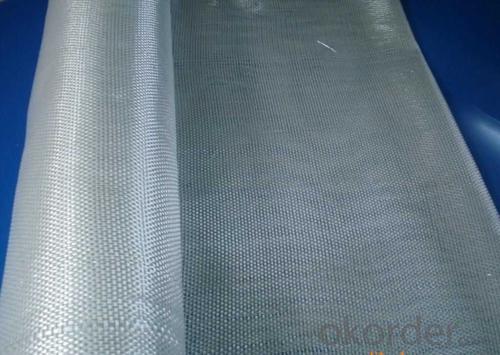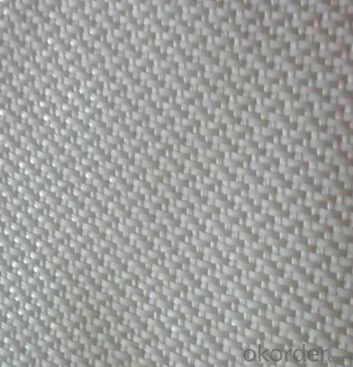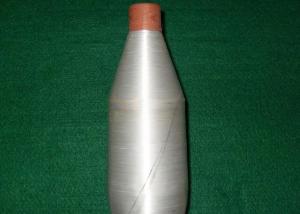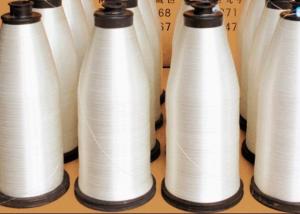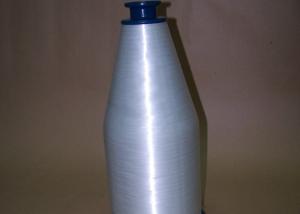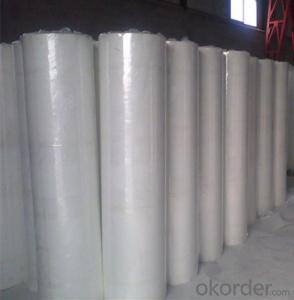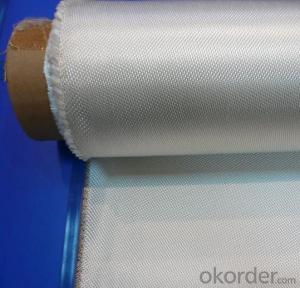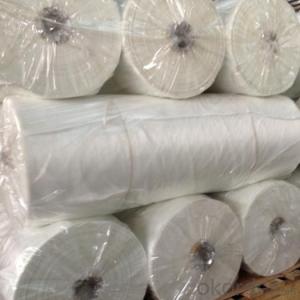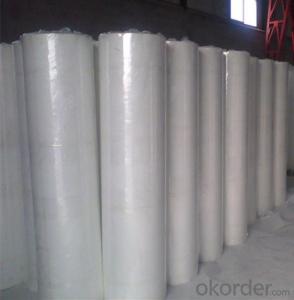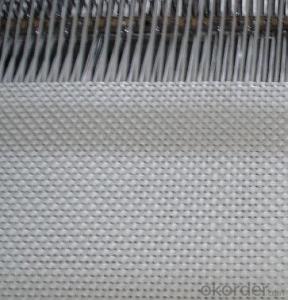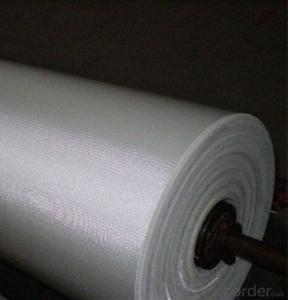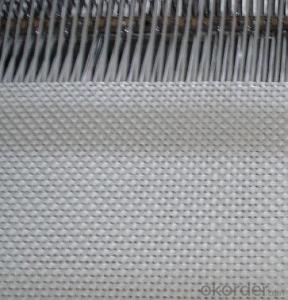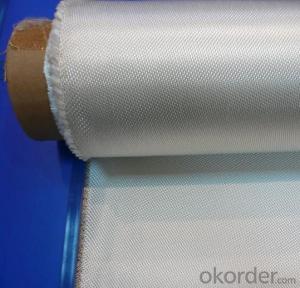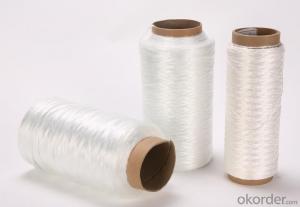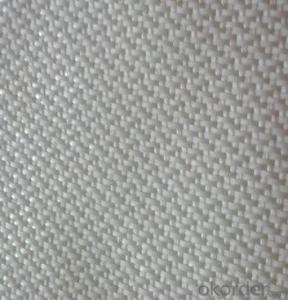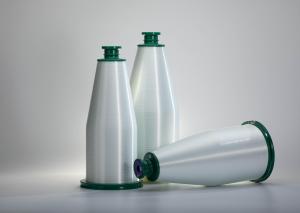Fiberglass Yarn Reinforced Fiberglass Fabric - Anti-Fire and Eco-Friendly Production
- Loading Port:
- Shanghai
- Payment Terms:
- TT OR LC
- Min Order Qty:
- 500 m²
- Supply Capability:
- 50000 m²/month
OKorder Service Pledge
OKorder Financial Service
You Might Also Like
Fiberglass Fabric Anti-fire And Environmental Production
Fiberglass Fabric Introduction:
Fiberglass fabric is weaved by high quality fiberglass,as a kind of engineering material,which is
many excellent characteristics:
flame-resisting,corrosion resistant,high strength,heat resistance.stable structure,good chemical resistance,durability.
Fiberglass Fabric Features:
Warp and weft yarns are parallel arrangement as flat situation, with uniform tension;
Fiber is aligned with large consistency, stable and easy operation;
Good moldability, fast and complete wet out in resins, resulting in high productivity;
Good transparency and high strength of composite products.
Fiberglass Fabric Specification:
mark | Fiber consistency(ends/ cm) |
Area weight (g/ m2) |
Thick-ness (mm) |
Width (cm) |
Length (mm) | Breaking strength(N)≥ |
weave | |||
Warp direction | Weft direction | Warp direction | Weft direction | |||||||
EW200 | 16 | 12 | 200±20 | 0.2 | 90-130 | 300-1200 | 980 | 980 | ||
EW210 | 16 | 12 | 200±20 | 0.21 | 90-130 | 300-1200 | 1080 | 1080 | Twill weave | |
Plain weave | ||||||||||
EWR360 | 3.2 | 1.8 | 354±18 | 0.35 | 50-300 | 100 | 2000 | 2000 | ||
EW280 | 16 | 10 | 280±28 | 0.26 | 90-130 | 300-1200 | 1800 | 1800 | ||
EW300 | 14 | 10 | 320±32 | 0.3 | 90-130 | 300-1200 | 1500 | 1500 | ||
EW430 | 20 | 12 | 420±42 | 0.43 | 90-130 | 300-1200 | 2000 | 2000 | Broken twill | |
EWR136 | 10 | 10 | 136±13 | 0.136 | 100 | 200 | 850 | 850 |
Plain weave | |
EWR200 | 8 | 7 | 200±20 | 0.21 | 100 | 200 | 1200 | 1200 | ||
EWR400 | 3.6 | 3.2 | 400±30 | 0.4 | 100 | 50-100 | 2500 | 2500 | ||
EWR600 | 2.6 | 2.5 | 600±50 | 0.6 | 100 | 40KG | 4000 | 4000 | ||
EWR580 | 2.5 | 2.3 | 576±29 | 0.58 | 100 | 40KG | 3850 | 3850 | ||
EWR800 | 1.8 | 1.8 | 800±60 | 0.8 | 100 | 40KG | 4600 | 4600 | ||
Product Show
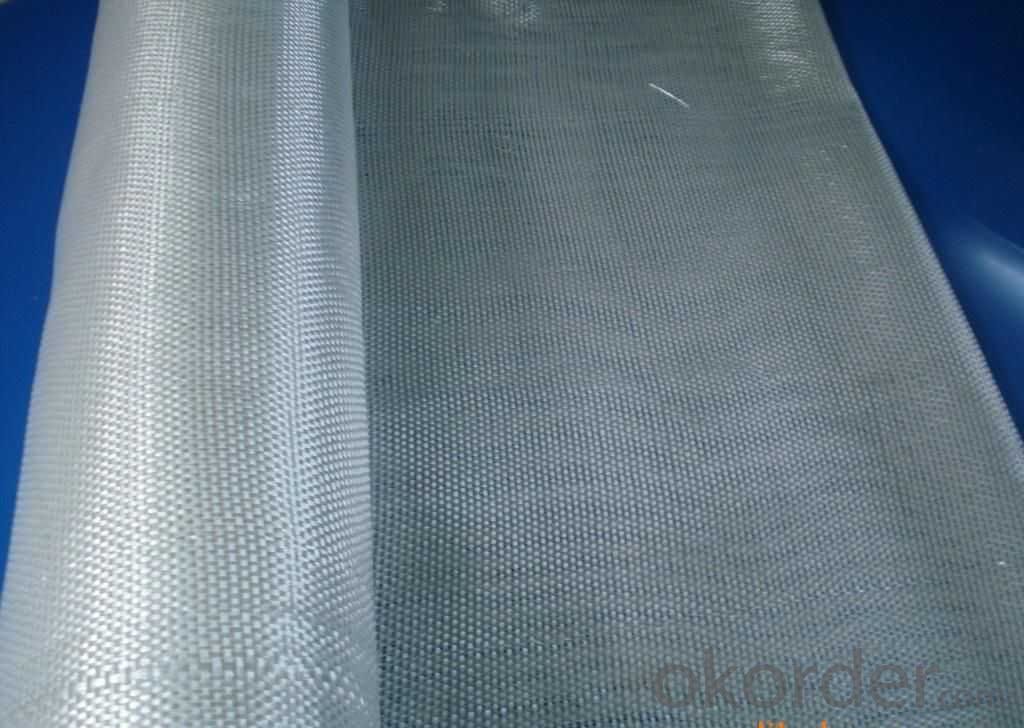
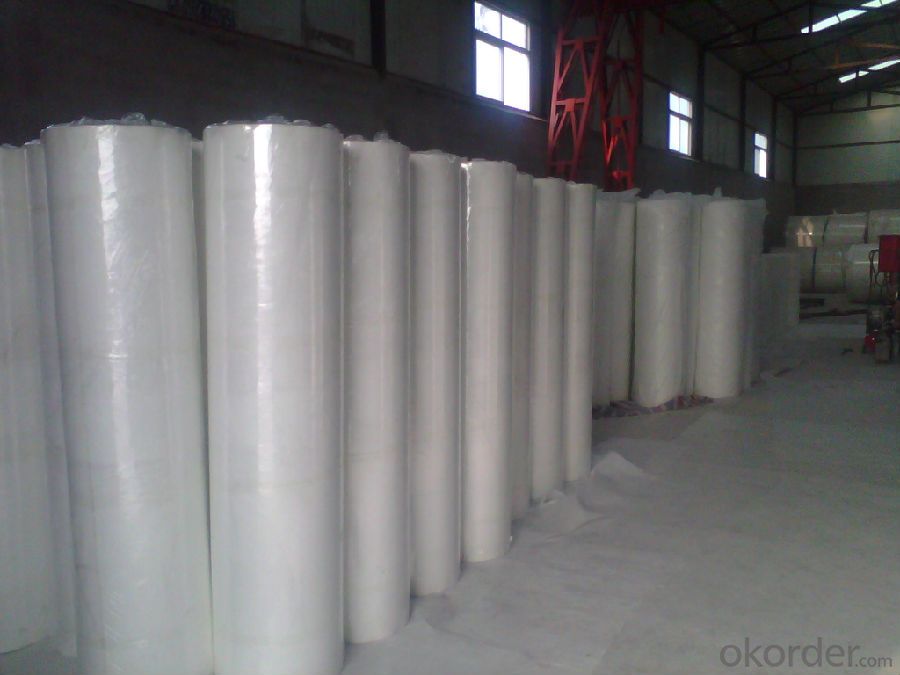
Fiberglass Fabric Usage:
E-glass woven roving is a schistose double faces reinforcement fabric that is weaved into from roving in directly.
E-glass fiber fabric (thin fabrics with thickness from 0.025 to 0.09mm) is suitable for electrical isolation mica product, wax cloth as the reinforcement materials.
E-glass woven roving applys to all kinds of polyester reinforcement system, (such as unsaturated polyester resin, vinylite,epoxy resin and phenolic resin.
E-glass woven roving is a high performance reinforcement material. It is widely used in hand lay-up and machinery processing products, (such as vessel, container, airplane and vehicle component, furniture, athletic facilities and other industry.
FAQ
1.Package of Fiberglass Fabric?
Fiberglass fabric is wound on a paper tube with inner diameters of 50. 8, 76 or 152mm. Each roll is wrapped in a plastic bag, then to be packed in a carton box. The rolls are to be horizontally placed.
Width (cm): 90, 100, 127
Length (m): 100, 200, 300, 400
2.Storage of Fiberglass Fabric?
Store rolls in a cool, dry location
Protect rolls from weather and other damage.
3.If sample available if needed?
We aim to offer our customer best Products&Service,samples are allowed if necessary.
- Q: Is fiberglass yarn resistant to acids or alkalis?
- Fiberglass yarn is known for its excellent resistance to acids and alkalis. The inorganic nature of fiberglass, composed mainly of silica, provides it with strong resistance to chemical attack. Acids such as sulfuric acid, hydrochloric acid, and nitric acid have limited impact on fiberglass yarn, making it a reliable material for applications in industries dealing with corrosive substances. Similarly, fiberglass yarn also exhibits resistance to alkalis such as sodium hydroxide and potassium hydroxide. This resistance to acids and alkalis makes fiberglass yarn suitable for use in various industries, including chemical processing, water treatment, and electrical insulation.
- Q: Can fiberglass yarn be used for making insulation boards?
- Yes, fiberglass yarn can be used for making insulation boards.
- Q: What are the pricing factors for fiberglass yarn?
- The pricing factors for fiberglass yarn can vary depending on several key factors. Firstly, the quality and grade of the fiberglass yarn play a significant role in determining its price. Higher quality yarns that are more durable, have a better tensile strength, and offer superior heat resistance are generally priced higher than lower-grade options. Additionally, the demand and supply dynamics in the market influence the pricing of fiberglass yarn. If there is a high demand for fiberglass yarn but limited supply, the prices are likely to be higher due to the scarcity of the product. On the other hand, if there is an oversupply of fiberglass yarn in the market, prices may be relatively lower. The manufacturing process and production costs also impact the pricing of fiberglass yarn. The cost of raw materials, energy, labor, and overhead expenses incurred during the manufacturing process are reflected in the final price of the yarn. Furthermore, factors such as the brand reputation, industry competition, and market trends can also influence the pricing of fiberglass yarn. Established brands with a strong reputation for quality may command higher prices compared to lesser-known brands. Similarly, pricing strategies adopted by competitors in the market can influence the pricing of fiberglass yarn. Lastly, the quantity of fiberglass yarn purchased can also affect its pricing. Bulk purchases often come with discounts or wholesale pricing, making it more cost-effective for buyers. Overall, the pricing factors for fiberglass yarn encompass quality, supply and demand dynamics, production costs, brand reputation, competition, market trends, and quantity purchased.
- Q: Is fiberglass yarn resistant to fungus?
- Fiberglass yarn indeed shows resistance against fungus. The reason behind this lies in its composition of inorganic elements, specifically glass fibers, which do not foster a favorable environment for fungal growth. Furthermore, fiberglass yarn is often coated with a unique resin or finish that bolsters its resistance against fungus and other types of biological deterioration. As a result, fiberglass yarn finds extensive use in various applications where protection against fungus is crucial, including outdoor fabrics, insulation materials, and composite structures.
- Q: How does fiberglass yarn affect the breathability of a product?
- Fiberglass yarn can significantly impact the breathability of a product. Due to its non-porous and tightly woven nature, fiberglass yarn restricts the passage of air and moisture, thus reducing the breathability of the product. This can result in increased heat and moisture retention, potentially leading to discomfort and decreased overall breathability.
- Q: What are the different thicknesses or weights of fiberglass yarn available?
- Fiberglass yarn is available in various thicknesses or weights to suit different applications and requirements. The thickness or weight of fiberglass yarn is typically measured in terms of the tex or denier. Tex is a unit of linear mass density, and it represents the weight in grams of 1,000 meters of yarn. The tex measurement system is commonly used for industrial applications. Fiberglass yarn is available in tex ranges such as 50 tex, 100 tex, 200 tex, and so on. The higher the tex value, the thicker and heavier the yarn will be. Denier is another unit of linear mass density, commonly used for consumer textiles. It represents the weight in grams of 9,000 meters of yarn. Fiberglass yarn can also be measured in denier, with options such as 300 denier, 600 denier, 900 denier, and more. Similar to tex, a higher denier value indicates a thicker and heavier yarn. The specific thickness or weight of fiberglass yarn required depends on the intended use. For example, thinner and lighter yarns may be suitable for applications such as reinforcement in composites, while thicker and heavier yarns may be more appropriate for insulation or thermal protection purposes. It is important to note that different manufacturers may offer a range of tex or denier options, and they may also have their own unique specifications and tolerances. Therefore, it is recommended to consult with the manufacturer or supplier to determine the specific thickness or weight options available for fiberglass yarn.
- Q: Can fiberglass yarn be used for making upholstery pillows?
- Yes, fiberglass yarn can be used for making upholstery pillows. Fiberglass yarn is known for its durability, strength, and resistance to wear and tear. These properties make it an excellent choice for manufacturing upholstery pillows, as they need to withstand daily use and retain their shape and structure over time. Fiberglass yarn can provide the necessary support and stability to the pillows, ensuring they maintain their form and provide optimum comfort. Additionally, fiberglass yarn is also fire-resistant, which is an important characteristic for upholstery products. However, it is important to note that fiberglass yarn can be rough and may cause skin irritation, so it should be properly covered with a fabric or other suitable materials before being used in upholstery pillows.
- Q: How does the moisture resistance of fiberglass yarn compare to other materials?
- Compared to other materials, fiberglass yarn is generally considered to have excellent moisture resistance. It is inherently water-resistant and does not easily absorb moisture, making it suitable for various applications where there is a concern about exposure to moisture or humidity. In contrast to natural fibers like cotton or wool, which tend to absorb water and weaken, fiberglass yarn remains strong and durable even when wet. Moreover, fiberglass yarn does not encourage the growth of mold or mildew, making it an ideal choice for areas with high levels of moisture. In summary, fiberglass yarn has superior moisture resistance compared to many other materials commonly used in textiles and other industries.
- Q: How does fiberglass yarn affect the thermal conductivity of a product?
- Fiberglass yarn has a significant impact on the thermal conductivity of a product. Due to its high insulation properties and low thermal conductivity, fiberglass yarn acts as an effective barrier against heat transfer. When used in the production of various products, such as insulation materials, textiles, or composite materials, fiberglass yarn significantly reduces the rate at which heat is transmitted through the product. The thermal conductivity of a material refers to its ability to conduct heat. In the case of fiberglass yarn, its structure consists of tightly woven glass fibers that trap air within the material. Air is a poor conductor of heat, and the trapped air pockets create a thermal barrier. This unique structure of fiberglass yarn allows it to limit the transfer of heat energy, resulting in excellent thermal insulation properties. By incorporating fiberglass yarn into a product, it effectively reduces the thermal conductivity of that product. This means that less heat can pass through the material, preventing heat loss or gain. Consequently, the use of fiberglass yarn can enhance the energy efficiency of various applications, such as insulation for buildings, thermal clothing, or even aerospace components. Furthermore, fiberglass yarn's low thermal conductivity also contributes to its fire-resistant properties. The material's high resistance to heat and flame makes it an ideal choice for applications where fire safety is crucial. Its ability to slow down the spread of heat allows for better protection against fire hazards. In summary, fiberglass yarn has a pronounced effect on the thermal conductivity of a product. Its unique structure and insulation properties significantly reduce heat transfer, making it an excellent choice for applications that require thermal insulation, energy efficiency, and fire resistance.
- Q: Can fiberglass yarn be used for making industrial gloves?
- Yes, fiberglass yarn can be used for making industrial gloves. Fiberglass yarn is known for its high strength and heat resistance properties, making it suitable for applications that require protection against heat, chemicals, and abrasion. Industrial gloves made from fiberglass yarn can provide reliable protection in various industrial settings.
Send your message to us
Fiberglass Yarn Reinforced Fiberglass Fabric - Anti-Fire and Eco-Friendly Production
- Loading Port:
- Shanghai
- Payment Terms:
- TT OR LC
- Min Order Qty:
- 500 m²
- Supply Capability:
- 50000 m²/month
OKorder Service Pledge
OKorder Financial Service
Similar products
Hot products
Hot Searches
Related keywords


